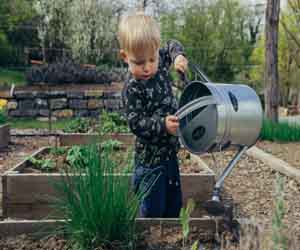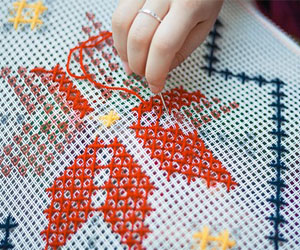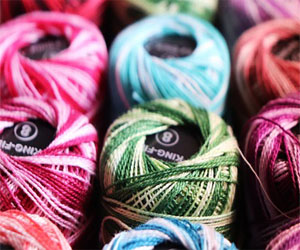


A Blooming Start To Your Green Journey

Gardening is a rewarding and therapeutic hobby that connects you with nature, enhances your outdoor living space, and provides a sense of accomplishment. If you're new to gardening, it can seem intimidating at first, but fear not. This article is your guide to gardening for beginners, where you'll discover the basics, get practical tips, and start your journey towards a flourishing garden.
Starting Small
For beginners, it's wise to start small. Consider the following steps:
Choose The Right Spot: Select a location with adequate sunlight and proper drainage. Most plants need at least 6 hours of sunlight each day to thrive.
Container Gardening: If you lack outdoor space or have limited mobility, consider container gardening. It allows you to grow plants in pots, which can be placed on balconies, patios, or even windowsills.
Select Easy-To-Grow Plants: Begin with plants that are known for their resilience and adaptability. Some great choices include basil, mint, marigolds, and succulents.
Quality Soil: Invest in good potting mix or prepare your garden soil with organic matter. Healthy soil is the foundation of a successful garden.
Planning Your Garden
A well-thought-out plan can make gardening more enjoyable and less overwhelming:
Design: Sketch your garden layout and decide where you want to place different plants. Consider factors like plant height, growth habits, and aesthetics.
Plant Selection: Choose plants that are suitable for your climate, soil type, and level of maintenance. Local garden centers can provide helpful recommendations.
Maintenance Schedule: Create a maintenance schedule that includes watering, fertilizing, and pruning. Regular tasks will help your garden flourish.
Essential Gardening Tools
Every gardener needs a basic set of tools:
Hand Trowel: For digging small holes and transplanting seedlings.
Pruning Shears: To trim and shape plants.
Gloves: To protect your hands from dirt and thorns.
Watering Can Or Hose: For proper irrigation.
Garden Rake And Hoe: For weeding and soil preparation.
Caring For Your Garden
The key to a thriving garden is care and attention:
Watering: Be mindful of your plant's water needs. Overwatering can be as harmful as underwatering. Learn to strike a balance.
Weeding: Regularly remove weeds, as they compete with your plants for nutrients and sunlight.
Fertilizing: Feed your plants with the appropriate fertilizers according to their needs. Some plants thrive with organic options, while others may benefit from slow-release synthetic fertilizers.
Pest Control: Keep an eye out for pests and diseases. Early detection and natural remedies can often prevent serious problems.
Pruning: Pruning helps maintain the shape of your plants, encourages new growth, and removes dead or diseased parts.
Embrace Learning
Gardening is an ongoing learning process. Don't be discouraged by setbacks or failures; they're part of the journey. Gardening books, online resources, and local garden clubs can be invaluable sources of knowledge and support.
Gardening for beginners can be a delightful and fulfilling pursuit. It allows you to cultivate beautiful, thriving spaces while nurturing your connection to nature. With a bit of planning, some basic knowledge, and a touch of patience, you'll soon find yourself on a green journey of growth and discovery. So, roll up your sleeves, grab your gardening tools, and let the gardening adventure begin!
Crafting Unique Brews In Your Kitchen
 Homebrewers often find inspiration in their surroundings and experiences. They may draw from their local environment, incorporating indigenous ingredients or regional flavors into their brews. For instance, someone living near a citrus orchard might use fresh oranges in their recipe, imparting a distinct regional character to the beer. Such a creative approach not only results in delicious brews but also connects the beer to a specific place, making it a unique and memorable experience.
Homebrewers often find inspiration in their surroundings and experiences. They may draw from their local environment, incorporating indigenous ingredients or regional flavors into their brews. For instance, someone living near a citrus orchard might use fresh oranges in their recipe, imparting a distinct regional character to the beer. Such a creative approach not only results in delicious brews but also connects the beer to a specific place, making it a unique and memorable experience.
Experimentation is another cornerstone of homebrewing creativity. Homebrewers are constantly tinkering with their recipes, trying new techniques, and pushing the boundaries of what's possible. This willingness to take risks leads to the discovery of innovative flavor combinations and brewing methods. Whether it's aging beer in oak barrels, using wild yeast strains, or adding unconventional ingredients like herbs and spices, the homebrewing world thrives on experimentation.
Furthermore, the craft beer movement has been instrumental in driving homebrewing creativity. As craft breweries continue to innovate and develop new styles, homebrewers often follow suit.
Creative Candle Making Ideas
 Flower-Embedded Candles: Press dried flowers or herbs between sheets of wax to create stunning, botanical candles. Whether you choose vibrant petals or aromatic herbs, these candles bring a touch of nature into your home.
Flower-Embedded Candles: Press dried flowers or herbs between sheets of wax to create stunning, botanical candles. Whether you choose vibrant petals or aromatic herbs, these candles bring a touch of nature into your home.
Ice Candle Art: Ice candles are a fascinating and innovative approach to candle making. Freeze wax around a pre-made mold filled with ice, and as the ice melts, it creates intriguing patterns in the candle. The end result is a truly one-of-a-kind piece.
Hidden Treasure Candles: Embed small, non-flammable objects like charms, gemstones, or small messages within your candles. As the wax melts, these hidden treasures are revealed, adding an element of surprise to your candle making.
Ombre Candles: Create a gradient effect by using different shades of the same color in a single candle. Gradually blend the colors as you pour the wax to achieve a smooth transition from one hue to the next.






Crafting Your Way To Creativity And Fulfillment
 Skill Development: Handmade projects offer the opportunity to learn and develop new skills. Whether you're perfecting your knitting techniques, honing your woodworking abilities, or expanding your artistic talents, each project is a chance for growth and self-improvement.
Skill Development: Handmade projects offer the opportunity to learn and develop new skills. Whether you're perfecting your knitting techniques, honing your woodworking abilities, or expanding your artistic talents, each project is a chance for growth and self-improvement.
Sustainability: In an age of mass production and consumerism, handmade projects can be a sustainable choice. Crafting your own items reduces the need for disposable products and promotes a culture of reuse and sustainability.
Connection: Handmade projects often bring people together. Joining crafting communities, attending workshops, or collaborating on projects with friends or family can foster a sense of connection and shared creativity.
To get started with your own handmade projects, consider the following:
Choose Your Craft: Select a craft that interests you the most. Whether it's sewing, pottery, knitting, or any other craft, your passion will drive your creativity.
Gather Materials: Acquire the necessary materials and tools. Invest in quality materials to ensure a successful and rewarding crafting experience.
Start Simple: Begin with straightforward projects to build your confidence and skills. As you gain experience, you can take on more complex and intricate creations.
Learn From Others: Join crafting groups, attend classes, or watch online tutorials. Learning from experienced crafters can provide valuable insights and techniques.
Tips For Every Enthusiast
 3. Explore Different Wine Glasses: The shape of your wine glass can impact your wine appreciation experience. Specific glass shapes are designed to enhance the aromas and flavors of different wine types. Investing in a set of quality wine glasses can make a noticeable difference in your tasting experience.
3. Explore Different Wine Glasses: The shape of your wine glass can impact your wine appreciation experience. Specific glass shapes are designed to enhance the aromas and flavors of different wine types. Investing in a set of quality wine glasses can make a noticeable difference in your tasting experience.
4. Understand The Importance Of Temperature: Serving wine at the appropriate temperature is vital. Reds, whites, and sparkling wines all have their ideal serving temperatures. Generally, red wines are served slightly warmer than white wines. Invest in a wine thermometer to ensure you're serving your wine at the right temperature.
5. Learn How To Pair Wine With Food: Food and wine pairing can be a magical combination that enhances both the meal and the wine. Certain wines complement specific dishes, bringing out the best in both. For example, try pairing a rich, red Bordeaux with a well-marbled steak or a crisp, acidic Sauvignon Blanc with seafood. Experimenting with pairings is an exciting part of wine appreciation.
6. Start A Tasting Journal: Consider keeping a wine tasting journal to document your experiences. Note the wines you've tried, your impressions, and any interesting details. Over time, this journal can become a valuable reference, helping you remember your favorites and charting your wine journey.
7. Attend Wine Tastings And Events: Wine tastings and events provide a unique opportunity to sample a variety of wines and learn from experts. Local wine shops, wineries, and wine clubs often host tastings, so keep an eye out for these opportunities to expand your palate and knowledge.
Unlocking Beauty With Natural Ingredients
 Healing With Herbs: Herbs have been used for centuries in traditional medicine and beauty practices. Ingredients like chamomile, calendula, and lavender possess anti-inflammatory and healing properties, making them ideal for calming irritated skin and promoting an even complexion.
Healing With Herbs: Herbs have been used for centuries in traditional medicine and beauty practices. Ingredients like chamomile, calendula, and lavender possess anti-inflammatory and healing properties, making them ideal for calming irritated skin and promoting an even complexion.
The Miracle Of Essential Oils: Essential oils are concentrated extracts from plants and are known for their therapeutic properties. Lavender, tea tree, and rosehip oils are excellent choices for skincare, offering benefits such as acne reduction, scar healing, and anti-aging effects.
Fruit Extracts: Fruits like papaya, pineapple, and citrus fruits contain natural enzymes and acids that gently exfoliate the skin, leaving it brighter and more radiant. They are commonly found in natural peels and masks.
The Green Beauty Revolution: The natural beauty movement has given rise to the concept of "green beauty." Green beauty emphasizes the use of clean, natural, and eco-friendly ingredients. Many beauty companies are now formulating products without harmful chemicals, ensuring they are safe for both individuals and the environment.
DIY Beauty: For those who prefer a hands-on approach, DIY beauty using natural ingredients is becoming increasingly popular.
Crafting Beauty With Thread
 Exploring The Rich World Of Decorative Stitching: Decorative stitching encompasses a wide array of techniques, each offering a unique way to embellish and beautify fabrics. While the art of sewing often serves a functional purpose, decorative stitching goes beyond utility to infuse items with a touch of artistic flair.
Exploring The Rich World Of Decorative Stitching: Decorative stitching encompasses a wide array of techniques, each offering a unique way to embellish and beautify fabrics. While the art of sewing often serves a functional purpose, decorative stitching goes beyond utility to infuse items with a touch of artistic flair.
Embroidery: The Timeless Embellishment
Embroidery is one of the most celebrated forms of decorative stitching. This intricate craft involves the use of various stitches, threads, and colors to create patterns, designs, and images on fabric. Whether it's delicate floral motifs, intricate lacework, or intricate monograms, embroidery adds a personal and artistic touch to everything from clothing to home furnishings.
Quilting: Stitching Stories In Fabric
Quilting is another form of decorative stitching that marries functionality with artistic expression. Quilters use stitches to join layers of fabric and create intricate designs that often narrate stories or reflect cultural traditions. From patchwork quilts to intricately stitched bedspreads, quilting is a testament to both creativity and craftsmanship.
Appliqué: Layering For Impact
Appliqué is a technique that involves sewing one piece of fabric onto another, often in a layered or patchwork manner. It allows for the addition of different textures, colors, and patterns to create striking and vibrant designs. Appliqué is commonly used in clothing, accessories, and textile art.
Beadwork And Sequins: Adding Glamour And Sparkle
Decorative stitching also encompasses the use of beads, sequins, and other embellishments to elevate textiles. These tiny elements are sewn onto fabric in intricate patterns to add glamour, sparkle, and a touch of opulence. Beaded embroidery is commonly found on wedding gowns, eveningwear, and accessories.